Table of Contents
What are Lichens?
Lichens is the symbiotic association of fungus (mycobiont) and an alga (phycobiont). Many species of ascomycetes and few species of basidiomycetes are found growing in close association with one of the several genera of green or blue-green algae and constitute lichen thallus. Algae prepare organic food by photosynthesis and give it to the fungus. In turn, the fungus provides structural protection to algae as well as gives them the moisture of the atmosphere. Lichens are very good pollution indicators – they do not grow in polluted areas.
Occurrence of Lichens:
Lichens are perennial and are found in diverse habitats from the polar region to the equator, specifically in all dry inhospitable places. They grow on bare rocks (Saxicolous), barks of trees (Corticolous), deadwood, leaves, branches or on open ground. In India, lichens are found all over the Himalayas and the higher hills of the Peninsula.
Morphologically the Lichens are of three types:
- Crustose- Crustose lichens show crust-like growth. These lichens are attached to the substratum at several places and cannot be easily isolated. Example- Rhizocarpon, Lecanora, Graphis etc.
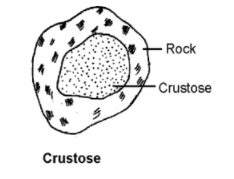
- Foliose- These lichens are flat, broad and leaf-like and are loosely attached to the substratum by fungal hyphae. Example-Physica, Peltigera, Parmelia, Chauduria etc.
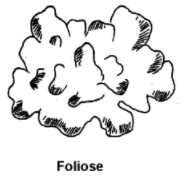
- Fruticose- Fruticose lichen is cylindrical, well-branched and pendent with hair like outgrowths. These are attached to the substratum by means of a disc. Example- Cladonia, Evernia, Ramalina etc.

Internal Structure of Lichen:
The internal structure of lichens is simple. The major part of the plant body is composed of closely interwoven hyphae of the fungus in association with the algal component. There is an upper or outer cortex, algal zone, medulla, lower cortex and rhizines. Rhizines are attaching devices made of fungal hyphae. Only the algal zone containing photosynthetic partner. The rest of the components are made of fungus only. In heteromerous lichens, the alga is restricted to only the algal zone (also called the gonidial layer). Example- Parmelia, Physica. In homoiomerous lichens, the algal partner is distributed almost throughout the body. Example- Collema. The reserve food is lichen starch, lichenin.
Relationship between Fungus and Alga:
The relationship between the fungus and the alga in a lichen is a good example of symbiosis. In this association both the alga and fungus are benefitted. Alga prepares the organic food from CO2 and H2O and provides it to the fungus. If the algal partner is a cyanobacterium, it even fixes the nitrogen. The fungus provides the protective covering to the alga and fixes the lichen to the substratum. It also absorbs moisture from the atmosphere. According to some, the fungus is a controlled parasite on the alga. This association is called helotism.
Reproduction in Lichens:
The lichens reproduce by fragmentation of their thallus body generally. At times certain specialized structures called soredia are formed. A soredium has a few algal cells surrounded by fungal hyphae. They get dispersed by wind or other agencies and develop into new lichen thallus.
Economic Importance of Lichens:
- They make the food of animals like the reindeer and caribou (musk ox) in the tundra region. There they are referred to as reindeer moss.
- Lichens yield several dyes like pH indicator, dye-litmus.
- Lichens are used as medicines and for flavour and fragrances. Example- Lungwort was used to treat pulmonary diseases; Skill Lichen has been used in curing epilepsy; Evernia and Ramalina extracts are added in soaps etc.
- Extracts from Lobaria pulmonaria and Cetraria islandica are used in tanning leather.
- Lichens began the soil formation on the rocky areas by etching the rock surface and adding their own content.
- Lichens are sensitive to sulfur dioxide pollution.
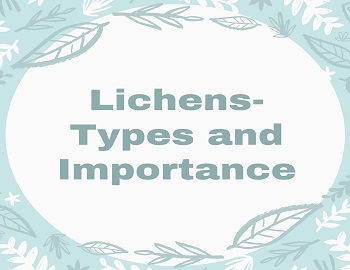


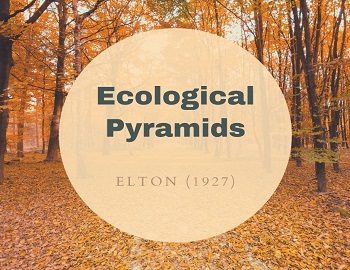


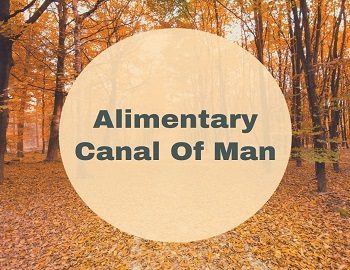


Comments (No)